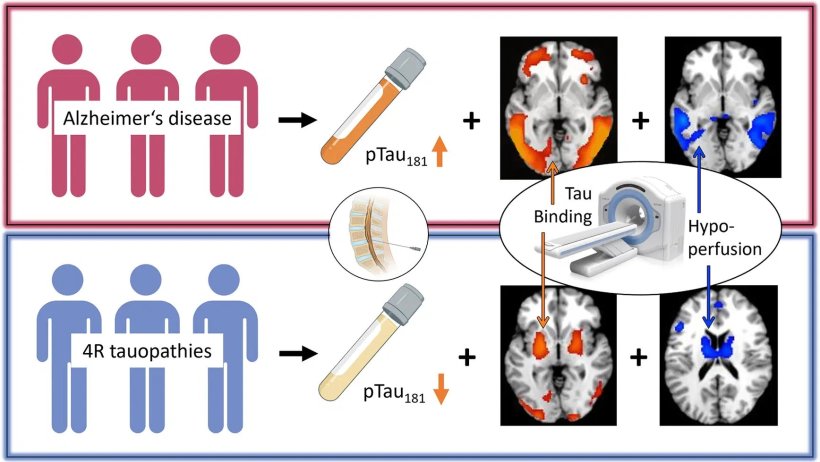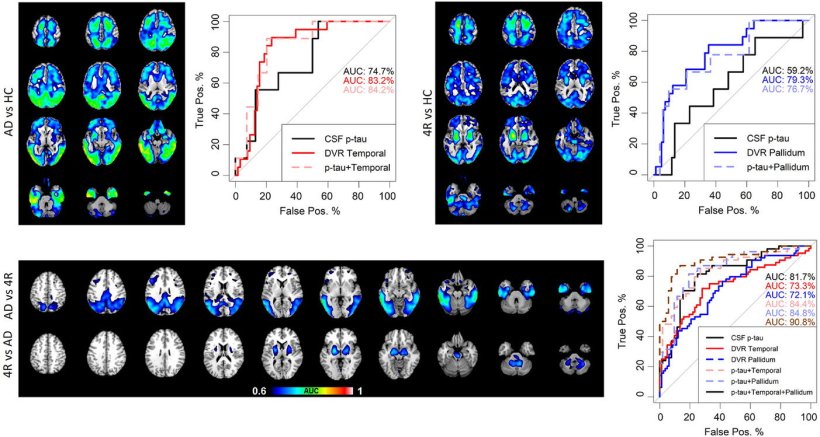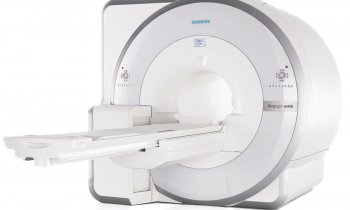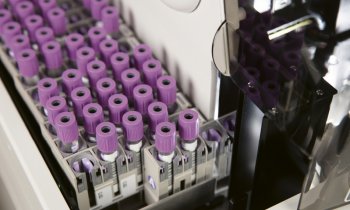
© LMU Klinikum
News • Neurodegenerative diseases
Tauopathy or Alzheimer's? Biomarker and PET imaging for improved diagnosis
Patients regularly show up at university hospitals with diseases so rare and specific as to be scarcely known to physicians in private practice.
Primary 4-repeat tauopathies are a good example. These are diseases which are primarily associated with movement disorders, but with symptoms that can often resemble those of Alzheimer’s disease, making precise diagnosis difficult. Now researchers at LMU University Hospital have found biomarkers that enable doctors to reliably distinguish the two conditions – albeit only with data from a particular imaging technique called positron emission tomography (PET). “The new diagnostic algorithm we developed allows physicians to differentiate with greater precision between Alzheimer’s disease and primary tauopathies, which facilitates earlier and more precise diagnosis and supports personalized treatment strategies,” says principal investigator Professor Matthias Brendel, acting director of the Department of Nuclear Medicine and member of the SyNergy Cluster of Excellence. The results have now been published in the journal of the Alzheimer’s Association, Alzheimer’s and Dementia.

Image source: Dilcher R et al., Alzheimer's & Dementia 2024 (CC BY 4.0)
In Alzheimer’s disease and primary 4-repeat tauopathies, large pathological aggregates of the tau protein are found in the brain. For decades, it has been possible to detect tau proteins for Alzheimer’s disease by analyzing the patient’s cerebrospinal fluid (CSF).
In recent times, however, researchers have developed radioactively labeled substances (tracers) that accumulate at the tau aggregates after injection into the body, which are visible on the PET images. “Our new study shows that tau can be identified with the novel tau PET tracer even in 4-repeat tauopathies – but not in the cerebrospinal fluid, rather in very specific areas of the brain known as the subcortical brain regions,” explains Roxane Dilcher, lead author of the study.
However, the PET signal is just one component of a complex new diagnostic process. The researchers have additionally found new biomarkers that indicate the presence of a 4-repeat tauopathy. “Diagnosis gets really effective when we analyze a combination of cerebrospinal fluid test, innovative biomarkers, and PET signal in the subcortical regions,” says Matthias Brendel. “Then we can recognize a 4-repeat tauopathy with a high degree of certainty.”
“Primary 4-repeat tauopathies are diagnosed almost exclusively using clinical criteria at present – without specific biomarkers that enable conclusive diagnosis in patients,” says co-senior author Dr. Nicolai Franzmeier, who is also a member of SyNergy. “The establishment of a biological definition and corresponding biomarker workflows will decidedly advance the research field.”
Source: LMU University Hospital
15.09.2024











